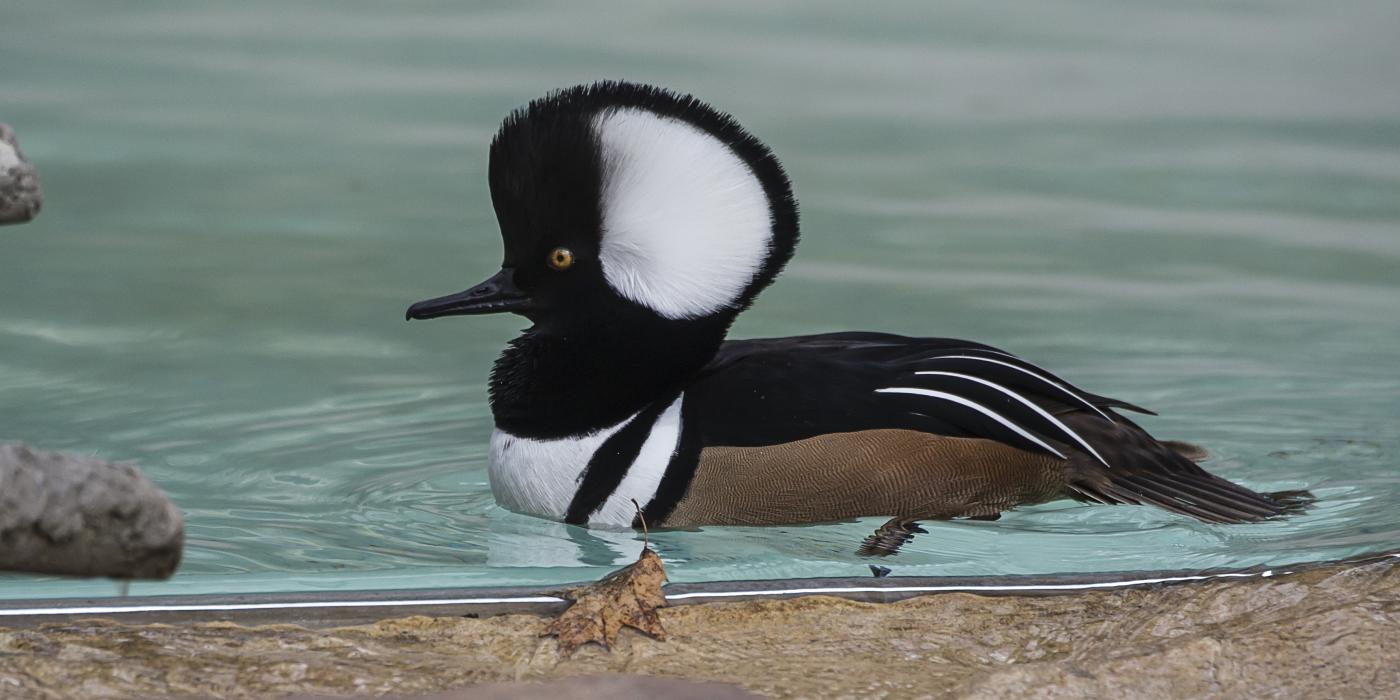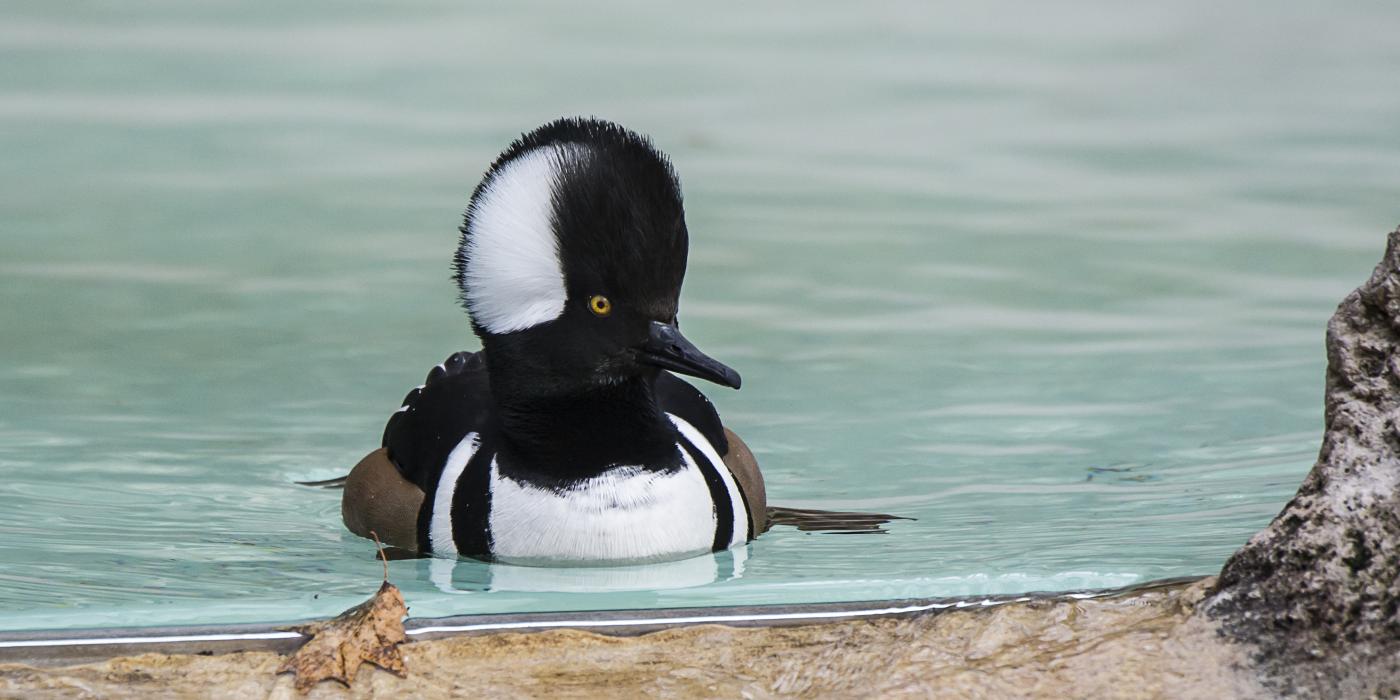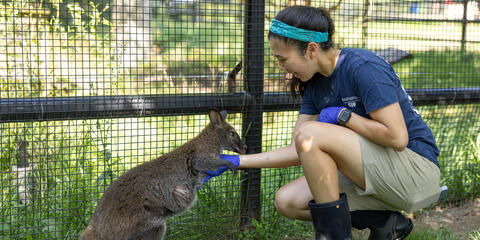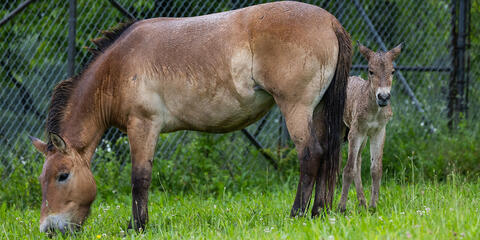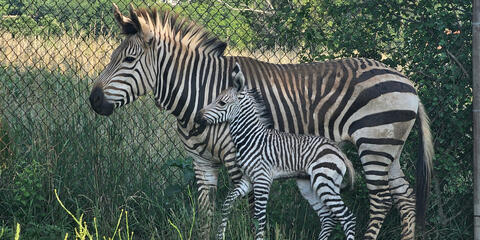Physical Description
The male is black and white with tawny brown sides and flanks. A large, white, fanlike crest surrounded by black atop its head is its dominant characteristic. The male has a black bill, bright yellow eyes and dull yellow feet.
Females have russet-brown heads with a backward slanted crest that is considerably smaller than the male's. They have dusky brown backs with gray chests and sides. The female has a black upper bill edged with orange. The lower bill is yellow, the eyes are brown and the feet are green.
Size
Hooded mergansers are the smallest North American merganser species with a length of 1.3-1.6 feet (41-48 centimeters). Males weigh about 2 pounds (0.9 kilograms), and females weigh about 1.6 pounds (0.7 kilograms). Hooded mergansers are similar in size to the wood duck, but with a more slender body and narrower wings.
Native Habitat
Hooded merganser breed mainly in southeastern Canada. They winter along the East Coast of the United States, the Gulf Coast and, to a lesser degree, California, Washington and Oregon. They inhabit wooded sloughs, streams and marshes. They prefer clear water, woodland streams and rivers where trees provide cavities for nesting.
Food/Eating Habits
Hooded mergansers eat fish, crustaceans and aquatic insects.
Reproduction and Development
Hooded mergansers nest in tree cavities, hollow trees and even the open tops of tree stumps. Unlike other ducks, the hooded merganser usually nests right next to water. From March to early June, females lay 10 to 12 almost round eggs and incubate them for 29 to 37 days. Chicks hatch very well-developed and are able to move around and forage at a very early stage.
Help this Species
- Organize or attend a stream, river, lake or other waterway cleanup in your area to preserve aquatic habitats for local species.
- Share the story of this animal with others. Simply raising awareness about this species can contribute to its overall protection.
- Protect local waterways by using fewer pesticides when caring for your garden or lawn. Using fertilizers sparingly, keeping storm drains free of litter and picking up after your pet can also improve watershed health.

